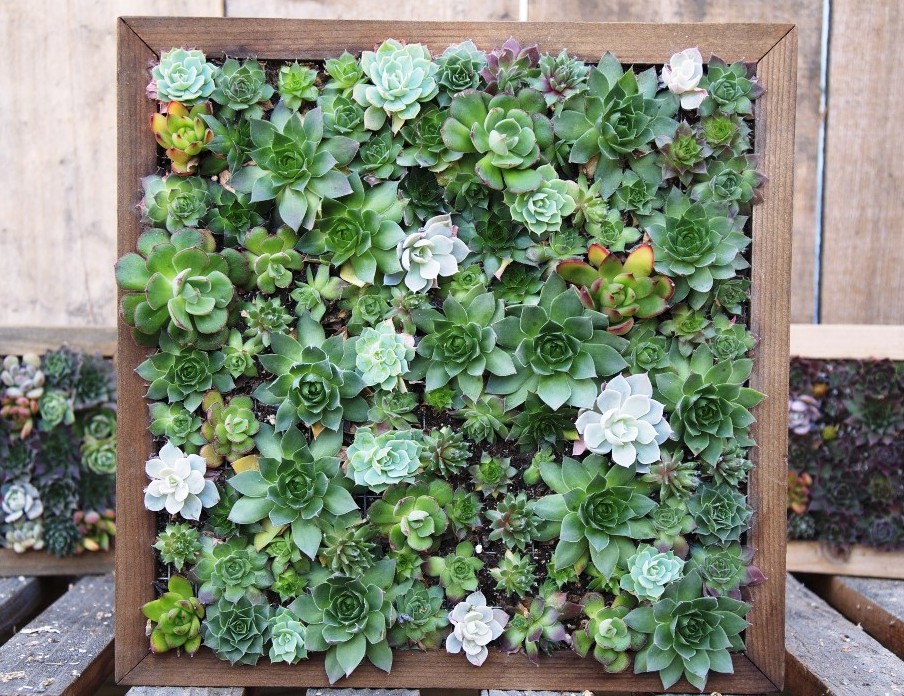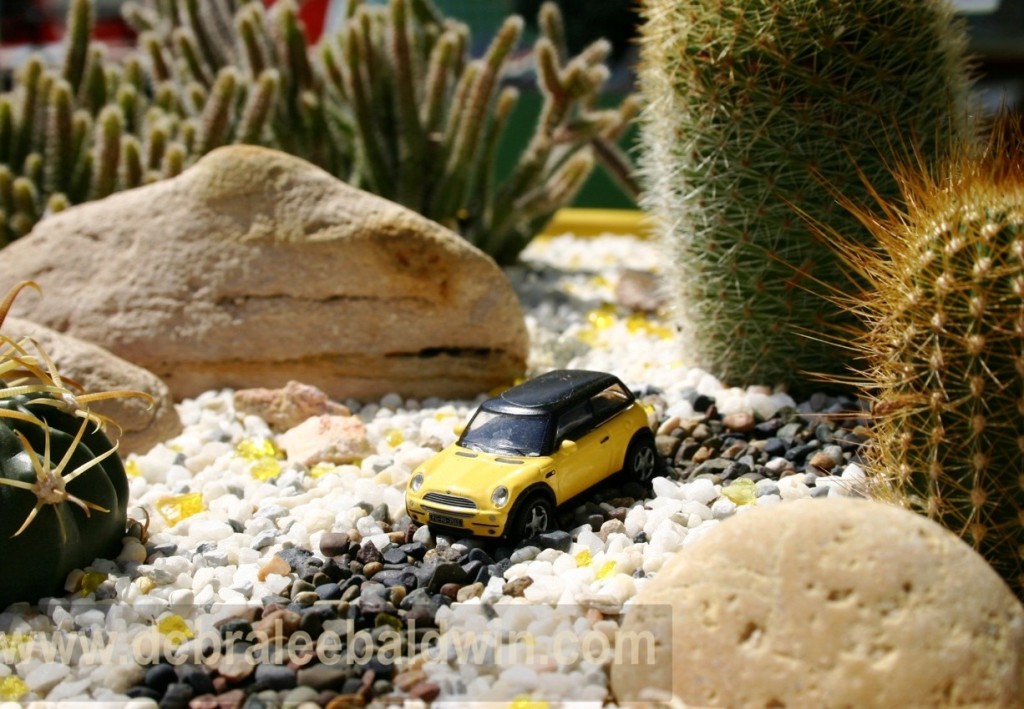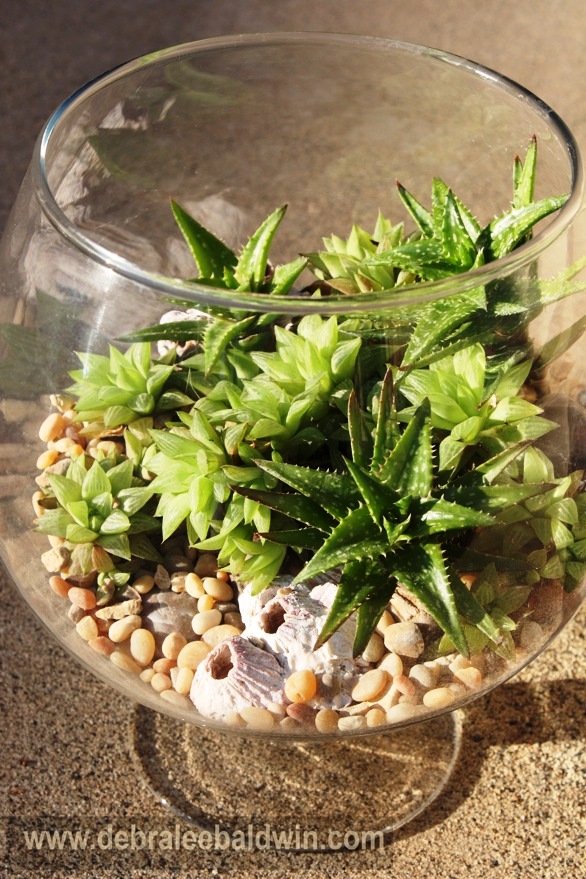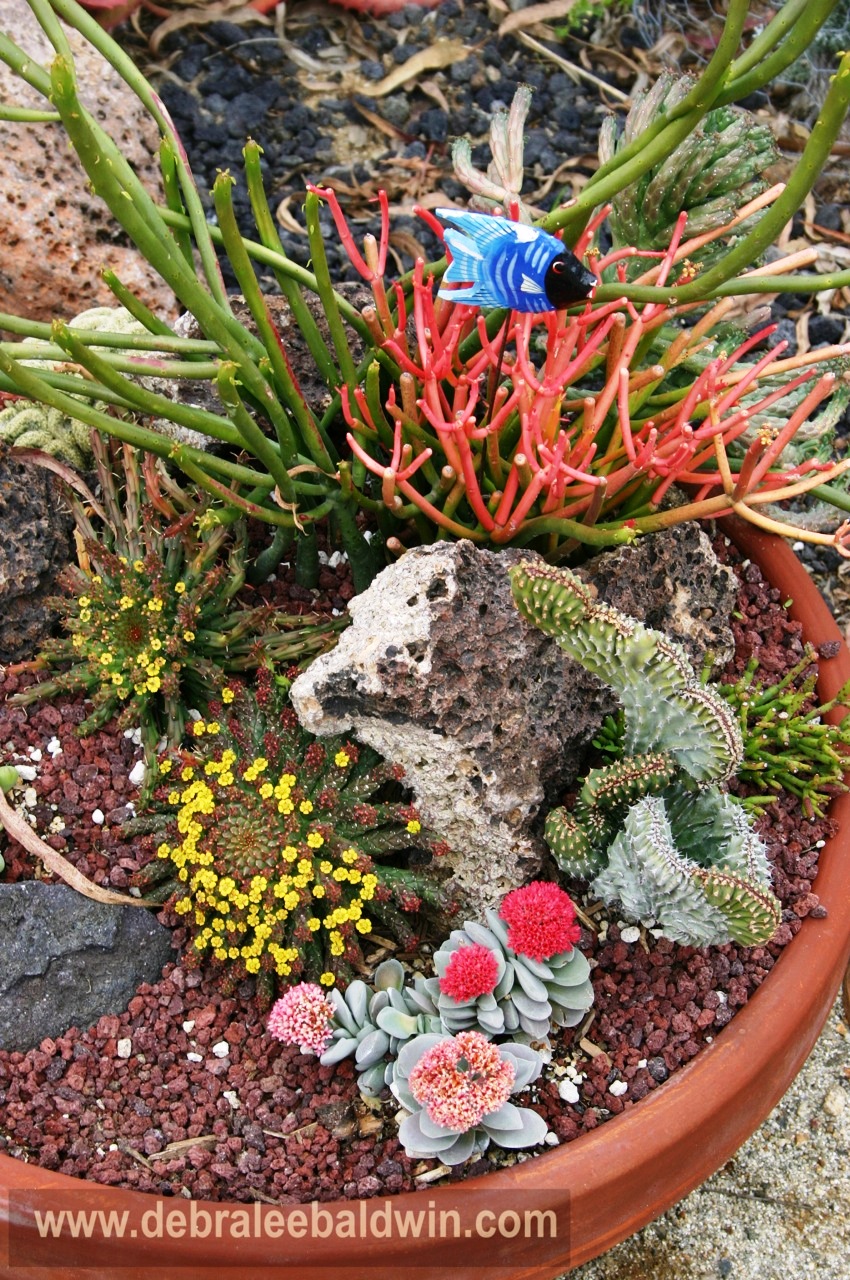Succulents’ time has come. This group of plants, which includes cactus, requires only one-third to one-fifth the water of other ornamentals. With long-term drought in the western U.S., interest has never been higher. Even in other parts of the country, succulents’ easy care and strong architectural presence make them eye catchers.
There’s a succulent for every use because they have evolved in three disparate environments—alpine regions, deserts, and tropics. The cold-tolerant ones grow in a surprising number of climate zones, while others are happy on a sunny windowsill or displayed in a greenhouse.
At the San Francisco Flower & Garden Show, I caught up with two leading experts—Robin Stockwell, former Succulent Gardens nursery owner, and Debra Lee Baldwin, writer, photographer, and author of three gardening books on succulents. Sunset magazine has declared them, “The King and Queen of Succulents.” While both were a bit bemused by the royal sobriquet, they each shared excellent advice in their presentations.
Give succulents light, water, and food—but less. No matter how weird they look, Robin says, they still need care. “They didn’t evolve in outer space.” Morning or filtered afternoon light suits all but the hottest sun lovers. Water them when the soil surface is dry or they start to look less shiny—that interval may be weeks. All need a fast-draining soil mix so water won’t collect around their roots. As for food—both Debra and Robin agree—apply half of whatever all-purpose food you already use.
Replicate succulents—but prune in reverse. Debra observes, “It’s the opposite of pruning other plants. You save the part you cut off and throw the rest away.” Allow the cut end to dry over before rooting, Robin advises. How long you wait depends on the diameter of the stem. “Narrow stems are a matter of days, maybe hours,” Robin says. “Thick aeoniums might take a few weeks.”
Design with succulents—they’re prime for playful.

Debra worked with her favorite design element—whimsy.
Her photos show the range:














